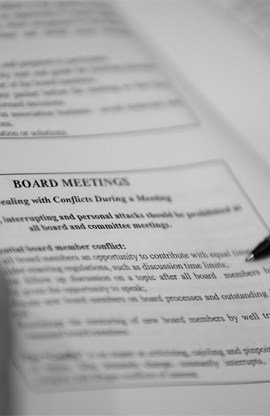We often receive questions from board members seeking advice on how to handle board meeting conflicts. We are here to help.
Board member vs. board member
Board Member to board member conflict will bring the association board meeting productivity to a halt. It is important that all board members work together to prevent conflicts, and, when they do arise, the members should work together to properly address the conflicts.
Limit potential board member conflict by focusing on these points set forth below:
- Give all board members an opportunity to contribute with equal time;
- Consider enacting regulations, such as discussion time limits;
- Allow follow up discussion on a topic after all board members have been given the opportunity to speak;
- Educate new board members on board processes and outstanding issues;
- Encourage mentoring of new board members.
Other times, the conflict at a meeting is caused by a difficult owner or owners. Difficult owners can be very outspoken regarding their view of the management of the association. The “Gadfly” is an expert at criticizing, cajoling and pinpointing the errors of others. S/he demands change, constantly interrupts, attacks personal integrity and alleges conflicts of interest.
Do you have an “expert” criticizer that finds thrill in pointing out the errors of others on the board? Someone that demands change, constantly interrupts, attacks personal integrity and alleges conflict of interest? This “Gadfly” can be exhausting and very difficult to deal with.
How to deal with the “Gadfly”:
- Establish and announce meeting procedures at the beginning of a board meeting, in a newsletter or in the meeting notice;
- Enforce established meeting procedures uniformly;
- Host a homeowner forum at the beginning of the board meeting with a strict time limit;
- Establish control. No one should be allowed to interrupt board meetings by speaking out of turn and raising irrelevant issues;
- Respond in a modulated, non-argumentative voice. Do not respond with anger, argue or trade insults. The board does not have to rebut the comments of any member;
- Utilize parliamentary control — by knowing when and how to a) table a motion; b) postpone a motion; c) refer a matter to a committee; d) adopt special rules of
Lastly and most importantly, it is very important to establish that name calling, interrupting and personal attacks should be prohibited at all board and committee meetings.
I am hopeful that the strategies in this Blog will help bring order to your meetings!
The author wishes to acknowledge that Conducting Meetings – A Guide to Running Productive Community Association Board Meetings by the Community Association Institute and M.J. Keats was a source for this publication
